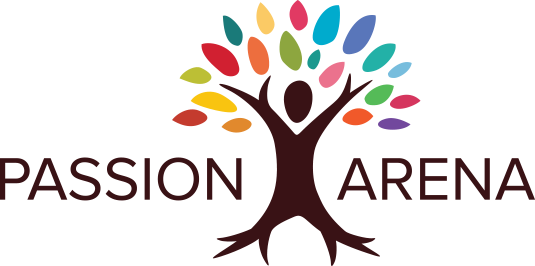How does teaching empathy help students succeed?
According to Dr. Michele Borba, author of Unselfie: Why Empathetic Kids Succeed in Our All-About-Me World, teens today are 40 percent less empathetic than they were thirty years ago. But why would a lack of empathy be problematic for students? The impacts on students outlined by Borba include:
Lower academic performance
Higher instances of bullying behaviour
Correlation with more cheating
Less resilience
As adults, a lack of empathy can hamper an individual's ability to collaborate, innovate, and problem-solve—all must-have skills for the global economy.
What exactly is empathy?
The University of California Berkley's Greater Good Science Center explains empathy as follows:
"The ability to sense other people's emotions, coupled with the ability to imagine what someone else might be thinking or feeling."
Roman Krznaric, author of Empathy: Why it Matters and How to Get It, defines it:
"Empathy is the art of stepping imaginatively into the shoes of another person, understanding their feelings and perspectives, and using that understanding to guide your actions."
We find that empathy is sometimes confused with sympathy. While they may seem similar on the surface, they deliver a wholly different outcome for students. Daring Greatly author, Brené Brown describes the difference:
"Empathy fuels connections, sympathy drives disconnection."
See the animated video below for a better understanding of Brené Brown's rationale behind this statement. Most dictionaries describe the difference between the two like this: Sympathy is 'feeling with' – compassion for or commiseration with another person. Empathy, on the other hand, is 'feeling into' – the ability to project your own personality into another person and more fully understand that person. Empathy has been described as being based in compassion, while sympathy is based in analysis.
So now that we have a handle on empathy, and how it compares to sympathy, let's look a little closer at how empathy shows up. The Greater Good Science Center defines two types of empathy:
Affective empathy refers to the sensations and feelings we get in response to others' emotions; this can include mirroring what that person is feeling, or just feeling stressed when we detect another's fear or anxiety.
Cognitive empathy, sometimes called 'perspective taking,' refers to our ability to identify and understand other peoples' emotions.
Why is empathy important for good education and life outcomes?
Increased affective and cognitive empathy shows a range of positive outcomes for students at school, and for life after school. Besides avoiding the problems of a lack of empathy as outlined above, increase empathy can:
Foster good, pleasurable and positive feelings
Improve emotional and physical health and well-being through increased connection, care and inclusion
Help to heals painful psychological problems such as loneliness, alienation, anxiety, fear, depression, despair or shame
Drive conflict resolution, head off conflicts before they happen or keep conflicts from escalating
Increase creativity and innovation by allowing us to see things from multiple perspectives
Expand our perspectives, helping to make us more open and inclusiv
Can empathy be taught?
Empathy has been taught for millennia. In the main, this has been done through parents and family members, and to a lesser extent through religious institutions. Schools have also taught empathetic practices, but in most cases this has been done under the banner of school rules or school values. The question is can we teach empathy more effectively and, are there approaches to teaching empathy that have been proven to be more effective? The answer to both is a definitive yes.
Empathy and Passion Arena
In our view, empathy forms a crucial part of any non-cognitive skills education, after all, it would be difficult to succeed in any endeavour without an ability to empathise or build relationships with others. As with all the non-cognitive skills we cover, empathy is closely intertwined with other skills and habits, such as self-control, self-awareness, mindfulness, happiness and optimism to name but a few. Empathy is also a critical element of the now popular Social Emotional Learning (SEL) movement.
Watch a Passion Arena episode about empathy
To get an idea of how we introduce our non-cognitive skills and, in particular empathy to students, click the button below to watch a Passion Arena episode that relates to empathy.
Want to find out more about empathy?
Books on empathy:
If you'd like to dive further into understanding empathy, we recommend the following books. Click on the titles for more information.
Videos on empathy:
Below are a few videos about empathy.
Academic papers on empathy:
The academic papers below are just a few covering empathy and social emotional learning. While we hope the studies below prove useful, if you have a specific area of empathy or SEL you want to address, we recommend searching Google Scholar.
The Impact of Enhancing Students’ Social and Emotional Learning: A Meta-Analysis of School-Based Universal Interventions
Authors: Joseph A. Durlak, Roger P. Weissberg, Allison B. Dymnicki, Rebecca D. Taylor, and Kriston B. Schellinger. First Published: January 2011
You Are Therefore I Am: How empathy education can create social change
Author: Roman Krznaric. First Published: July 2008
The Relationships Between Social Intelligence, Empathy, and Three Types of Aggression
Authors: Ari Kaukiainen, Kaj Björkqvist, Kirsti Lagerspetz, Karin Österman, Christina Salmivalli, Sari Rothberg, and Anne Ahlbom. First Published 1999.






